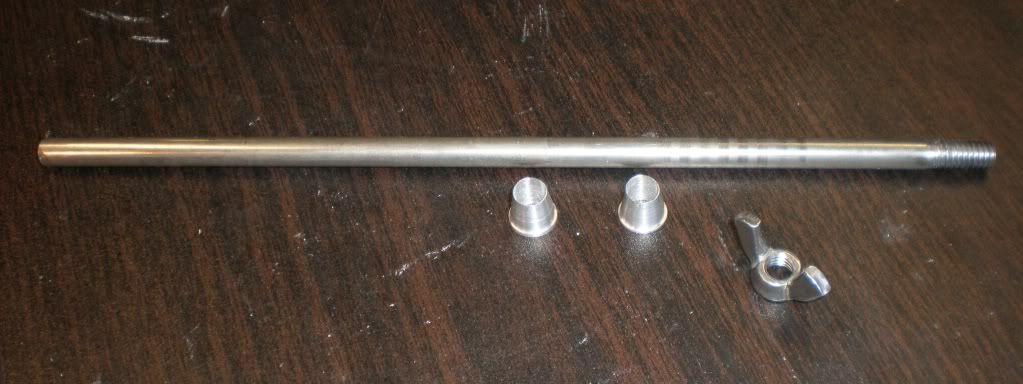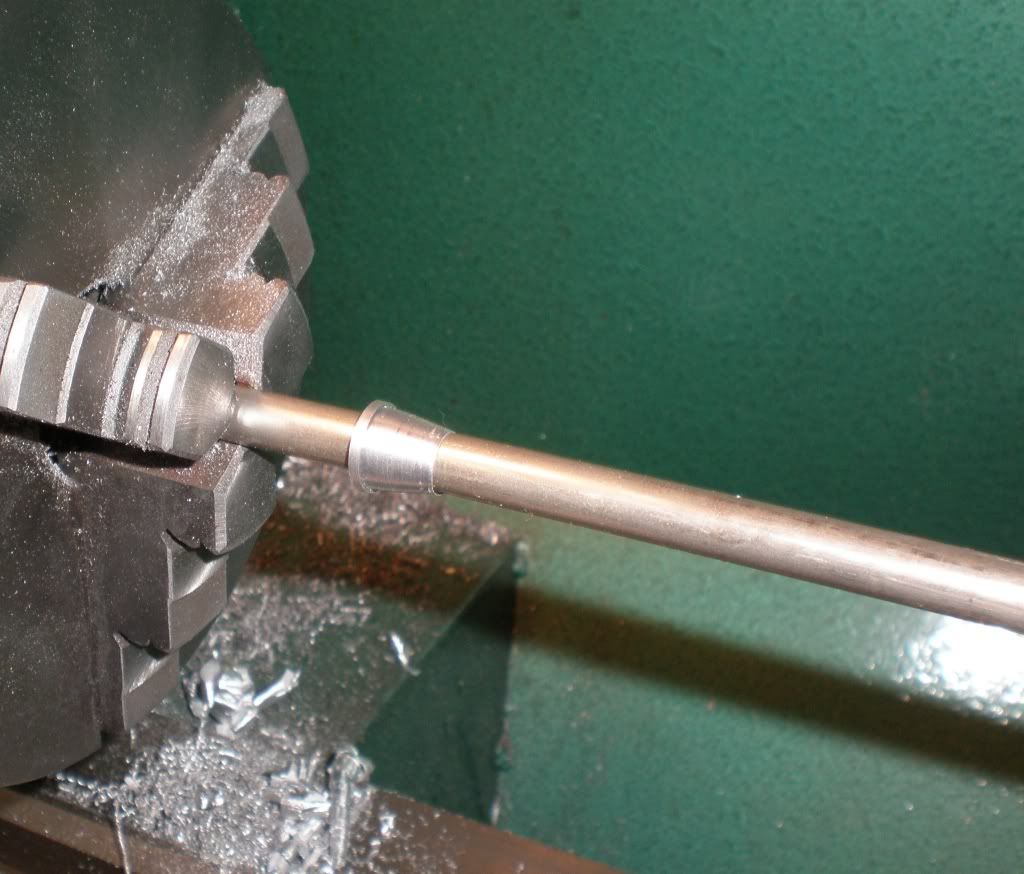This is only good for light work like refinishing. I am working on an Leech and Rigdon and am in the part of the project where the pistol is ready for the finish on the surface.
I had to come up with a way to hold the barrel in a lathe but not permit the chuck jaws to touch the finish.
I use the lathe for two things. First of all, since the barrel is round rather than octagonal I can do rough finishing on the round part with the lathe turned on. I am using sand paper of various grits. On the other hand there are parts of the process which require holding the barrel steady for working on the flat sections but still be able to rotate that barrel to get to the next flat section.
So I came up with this jig, made up of a rod, two tapers and a wingnut.

The rod goes into the lathe and the first taper goes onto the rod.

The barrel goes onto the rod followed by the second taper. The purpose of the taper fittings is to hold the barrel centered and to permit the jig to be used with both .36 and .44 caliber barrels.

The wingnut goes onto the end of the jig and the barrel stays nice and tight. The tapered fittings are aluminum so as not to damage the barrel.

You gunsmiths......Is this a prototype or did I reinvent the wheel?
I had to come up with a way to hold the barrel in a lathe but not permit the chuck jaws to touch the finish.
I use the lathe for two things. First of all, since the barrel is round rather than octagonal I can do rough finishing on the round part with the lathe turned on. I am using sand paper of various grits. On the other hand there are parts of the process which require holding the barrel steady for working on the flat sections but still be able to rotate that barrel to get to the next flat section.
So I came up with this jig, made up of a rod, two tapers and a wingnut.

The rod goes into the lathe and the first taper goes onto the rod.

The barrel goes onto the rod followed by the second taper. The purpose of the taper fittings is to hold the barrel centered and to permit the jig to be used with both .36 and .44 caliber barrels.

The wingnut goes onto the end of the jig and the barrel stays nice and tight. The tapered fittings are aluminum so as not to damage the barrel.

You gunsmiths......Is this a prototype or did I reinvent the wheel?
